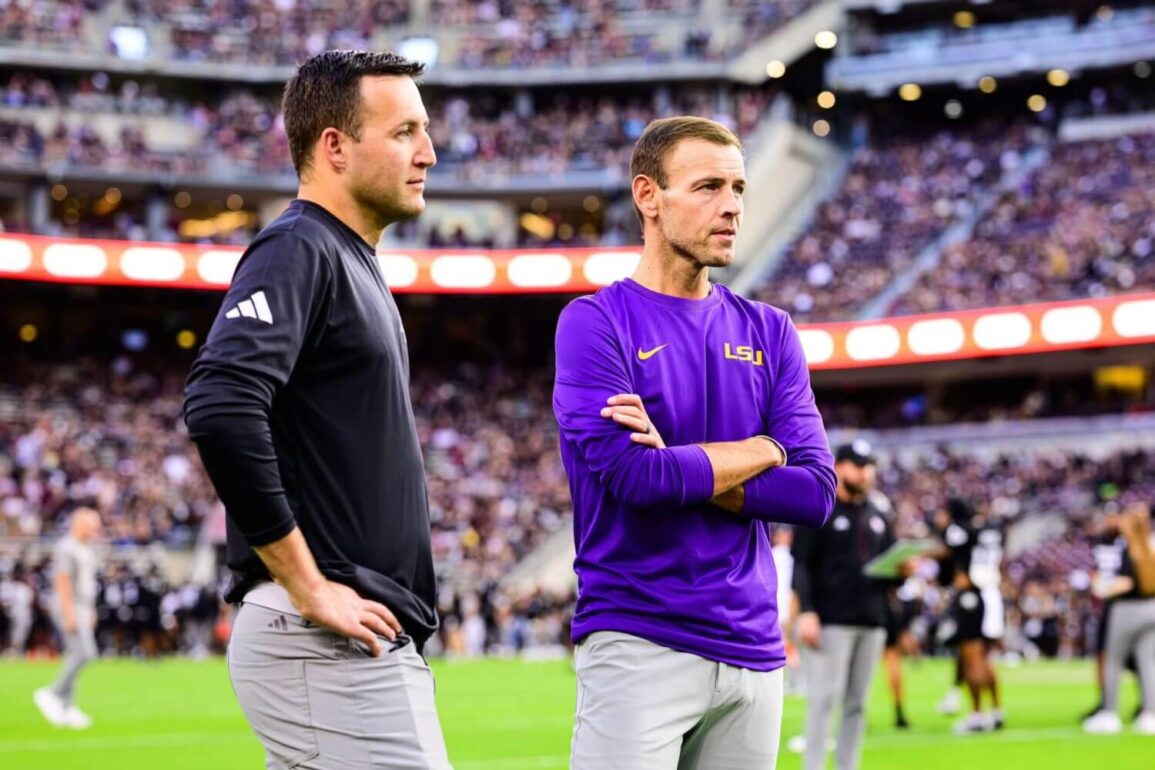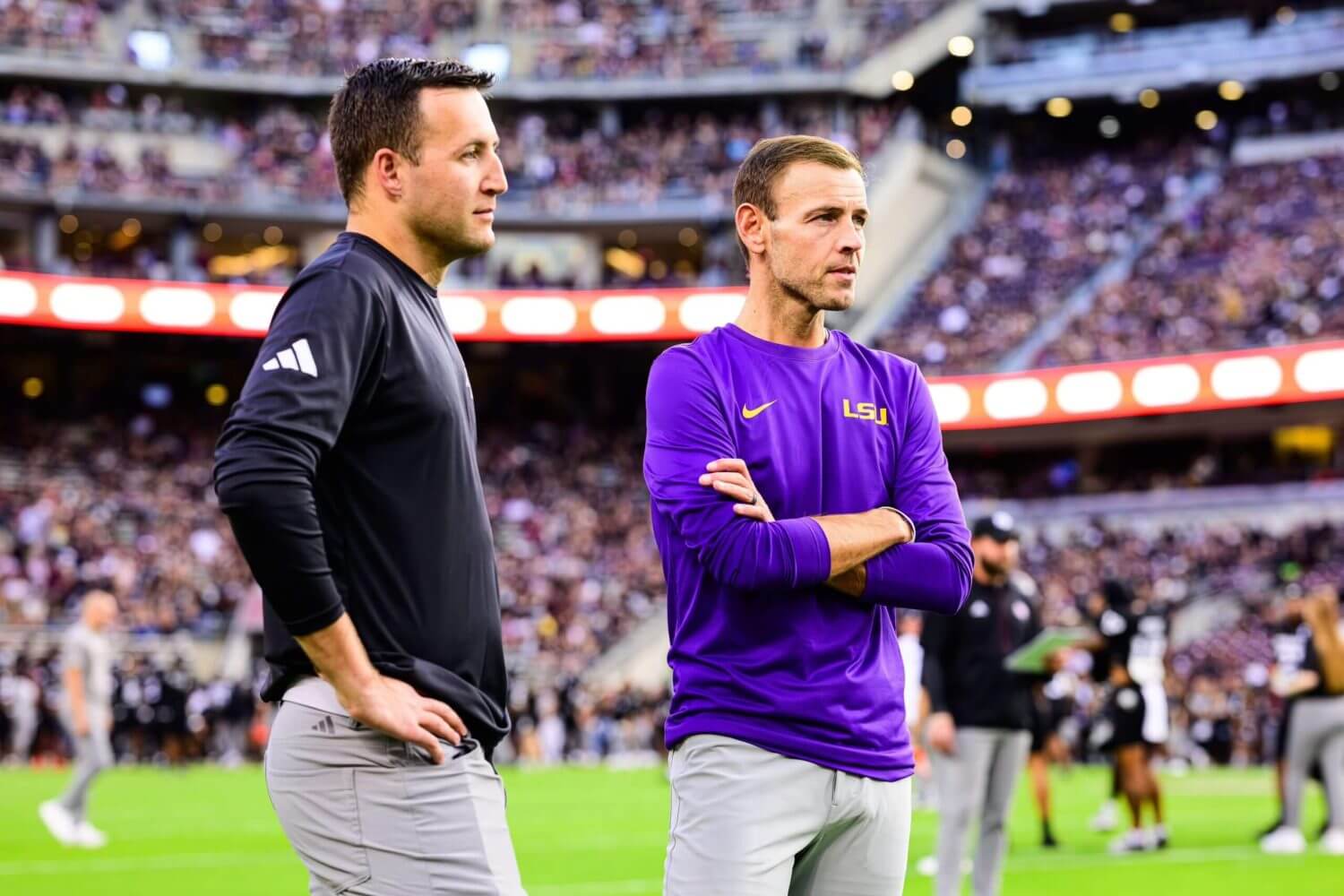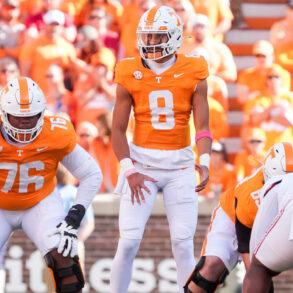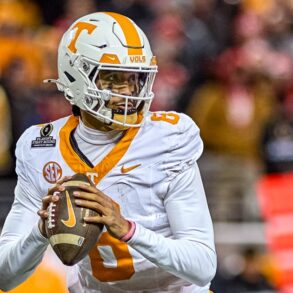During his first two weeks back at West Virginia in December, Rich Rodriguez got a little overwhelmed. The to-do list for the head coach’s second stint leading the Mountaineers looked a lot different than it had for his first, which began 24 years ago.
With college football’s early signing period passed and its transfer portal open, Rodriguez immediately began recruiting the first of more than 35 new players (not including 21 high school recruits signed days before he arrived). He planned to hire a general manager, the modern-day head of a program’s roster management operation, but didn’t finalize the move until early January.
Advertisement
In the meantime, the tasks of dealing with agents and negotiating player salaries— foreign concepts to an early-2000s coach — fell on Rodriguez’s shoulders.
“It was crazy,” he said. “I was like, ‘This is why you need other people.’”
Across college football, employing a general manager has become table stakes for programs that are serious about talent acquisition. A GM’s role can vary, but in most cases, that person oversees all aspects of roster construction: high school recruiting, the transfer portal, name, image and likeness compensation and — once the House v. NCAA settlement is approved — a revenue sharing payroll. Some programs have prioritized hires with NFL experience to help navigate an offseason that looks more professionalized by the day, especially with contract negotiations and NFL-style holdouts playing out in increasingly public forums.
In 2025, the GM has become one of the most important athletic department hires a school can make. But college football GMs aren’t an overnight invention. They’re a movement nearly 20 years in the making, with the largest roots tracing to some of the sport’s most storied programs.
Major rules changes accelerated general managers’ evolution from back-office grunts to one of the most influential people in the building. And their profile is only rising.
“The job of the recruiters and the departments now is less about managing cookie cakes and official visits and much more about managing a $22 million salary cap,” said Matt Dudek, who as an Arizona staffer under Rodriguez in 2016 became the first in college football to hold the GM title.
Three hires in the last six months have helped bring college football GMs closer to household name status.
Stanford took a bold step by giving alumnus Andrew Luck, the former Indianapolis Colts quarterback and Heisman Trophy finalist, something no other college GM has: decision-making power over the entire football program. Luck’s control, which closely mirrors what a typical NFL GM has, became crystal clear when he announced the firing of head coach Troy Taylor last month in the wake of investigations into the coach’s “aggressive and hostile behavior” toward colleagues.
Advertisement
Michael Lombardi, who arrived at North Carolina alongside Bill Belichick, brought something none of his college peers had: 30 years of experience in NFL front offices, including one as the GM.
Oklahoma made a splash in February by hiring Jim Nagy, the longtime executive director of the Senior Bowl and a former NFL exec. Nagy and the front office he constructs will work “alongside” Venables, the school announced, rather than under the head coach, as most college GMs do.
UNC is paying Lombardi $1.5 million, the highest known salary of any college football GM and more than some Group of 5 head coaches make. Oklahoma will pay Nagy $750,000, which is also on the high end for a GM. USC is believed to be paying Chad Bowden, hired from Notre Dame in January, around seven figures, while Alabama GM Courtney Morgan is getting paid $825,000 and Texas Tech GM James Blanchard surpassed $500,000 with his recent contract extension after an aggressive pursuit by Notre Dame.
Those salaries, and the hiring of Luck and Nagy by somebody other than the head coach, send a message.
“It shows that athletic directors and administrators are valuing the acquirers of talent at the level of coordinators,” said Cody Bellaire, a former recruiting staffer at LSU, Texas A&M, Baylor and Texas Tech who now works at On3. “They see that they are one of the five most important people in those buildings.”
A few forward-thinking coaches opened the door for GMs to gain influence, Texas Tech coach Joey McGuire chief among them.
McGuire made Blanchard his first hire when he took the Texas Tech job three years ago and promised Blanchard autonomy to offer recruits or transfers without prior approval from assistant coaches or even McGuire himself. “I told him, ‘The only person in that building who can tell you “No” is me,’” McGuire said. Blanchard was long believed to be the only GM in college football with that freedom.
Advertisement
To coaches who are accustomed to having the final word on every detail, it seems like heresy. McGuire shrugs it off, because the two have been together for six years and rarely disagree on evaluations.
“It’s not like I have any less power. I just have a guy that I believe in 100 percent,” McGuire said. “It’s about efficiency and trust.”
It works for Texas Tech, which signed consecutive top-30 recruiting classes for the first time in more than a decade in 2023 and 2024. This offseason, using deep pockets and an organized approach, the Red Raiders inked one of the nation’s top transfer portal classes. Blanchard turned down an offer to become Notre Dame’s GM in part because of the control he has in Lubbock.
“People in personnel need to thank Coach McGuire,” Blanchard said. “Because if he hadn’t been vocal about ‘Yes, this is how we do it, this is what I allow my personnel staff to do,’ I’m not sure if a lot of people around college football (personnel) would be as far as they are now.”
But it took years to get that far.
The first known use of the title “director of player personnel” in college football — the precursor to the general manager — was the result of a road trip Geoff Collins and Matt Rhule shared from Dallas to Cullowhee, N.C., in January 2006.
The two Western Carolina assistants were driving home from the AFCA Convention, where then-Georgia Tech coach Chan Gailey had offered Collins a job as the school’s director of high school relations.
Collins wanted to be an on-field coach, but he was also motivated to return to FBS football, so he took the job but asked Gailey if he could have a different title. “I don’t care what you call yourself, I just want you to come here and help us recruit,” Collins recalls Gailey telling him.
During that 14-hour journey, Collins and Rhule brainstormed. They noticed NFL executives had director of player personnel titles. “I’m not sure if I even knew what it meant,” Collins joked, but that’s where they landed, DPP. A month later, Collins was announced as a member of the Yellow Jackets in the newly created position.
Advertisement
Collins wrote letters, organized phone calls, managed the recruiting board and acquired game tape. He also recruited five prospects from outside Georgia Tech’s typical footprint. The Yellow Jackets turned in a top-15 recruiting class in his one year there, after not having one higher than 50th in the five seasons before his arrival.
Nick Saban hired Collins at Alabama in 2007 to install an NFL-style personnel apparatus. In Tuscaloosa, Collins went from a one-man band to the leader of a five-person staff, which included an assistant DPP, Patrick Suddes (who later headed up personnel at Texas, Auburn, Arizona State, Georgia Tech and North Carolina), and a graduate assistant, Lance Taylor (now Western Michigan’s head coach). Collins excelled but left after one season for the linebackers coach job at UCF.
In 2009, Ed Marynowitz became Alabama’s DPP at 24 and took the department to a new level. He built an army of student workers who prepared film and filtered through prospects using physical benchmarks specified by Saban. Each position coach was assigned a student, who worked like an area scout for the assistants. Marynowitz put the student workers through “scout school” and had NFL scouts who passed through campus speak to them.
While the Tide went on a seven-year run of No. 1 recruiting classes, Alabama personnel staffers — both full-timers and student assistants — began landing jobs at other programs, hired either by opposing coaches hoping to get a taste of the secret sauce or by former Saban assistants who wanted to set up similar operations when they landed head coaching jobs. The first time a student assistant landed a full-time gig elsewhere, which paid less than $30,000 at the time, it was a revelation.
“We were like, ‘Holy crap, this can be a profession for us?’” said Oregon chief of staff Marshall Malchow, a former Alabama staffer. “We had no idea that this would turn into something we could actually do for a living.”
Years before he was Ohio State’s personnel ace, Mark Pantoni found his way into the Florida recruiting office as a student volunteer in 2006. He showed up at 6:30 a.m. every day and prepared mailings for the coaches to send out to recruits. He cataloged film and hosted recruiting visits.
Pantoni did such a good job that word eventually got back to Urban Meyer, who offered him a full-time recruiting job, paying him $25,000. Pantoni became part of a two-person staff that managed the entire recruiting operation. His work ethic and eye for talent facilitated his move up the ladder. When Meyer took over at Ohio State, he hired Pantoni to run personnel, and Pantoni remains in Columbus as Ryan Day’s GM.
Advertisement
Without many peers in the industry, Marynowitz and Pantoni leaned on each other, trading notes and building a bond. In 2018, they spearheaded the first personnel and recruiting symposium in Nashville, a convention for staffers in the industry. The first edition had roughly 70 attendees, Pantoni said.
Last year, the symposium drew more than 700 people, including NFL scouts.
For personnel directors to break through from behind-the-scenes recruiting staffers to front-facing influencers, they needed head coaches who empowered them. As important as Saban and Meyer were to the personnel movement, their autocratic styles meant no one would rise quite that high.
Ed Orgeron had a different vision. Taking over as LSU’s coach in 2016, he had his strengths: recruiting and coaching defense, specifically, the defensive line. For everything else, he needed a confidant, and Austin Thomas fit the bill.
“They’d watch film in staff meetings and every coach would go through and give his opinion and the guy who had the last voice was Austin Thomas,” Bellaire said. “We knew that wasn’t normal … and it was clear how much he meant to the operation.”
Thomas viewed his GM title holistically, helping run the program from input on staff hires to operating budget and roster management.
“Coach O had a vision for understanding how big the college football world and management of an organization had become,” Thomas said. “He allowed someone to handle the off-the-field aspects at a high level.”
Eight years ago, the GM title in college football may have seemed odd. There was no transfer portal or free agency, players weren’t getting paid above the table, and recruiting still largely involved signing 25 high school players per year. But Thomas, Pantoni and Marynowitz thought bigger.
“I look at them as pioneers,” said Brian Spilbeler, vice president of the scouting service Tracking Football, which works with personnel departments. “They didn’t think it was some flash in the pan. They believed this is where college football is going.”
Advertisement
The transfer portal, instant eligibility for transfers and player compensation freedoms sparked an explosion in the personnel industry. Acquiring talent is the most important aspect of team building.
“If you only had 10 full-time coaches who had to manage that, it’d be impossible,” Collins said. Nineteen years after his road trip with Rhule, their placeholder title has become a full-blown movement.
The stakes are higher than ever because the players are getting paid. Ohio State spent $20 million on its national championship roster. Texas Tech spent more than $10 million in this portal cycle. Transfer quarterbacks getting seven figures is the norm. The revenue sharing cap, if the House settlement is approved, will be $20.5 million for each school, most of which will be allocated to football.
“There’s a financial implication to taking these players outside of their scholarship,” said Texas A&M GM Derek Miller.
Miller has seen it all evolve firsthand. When he was Bowling Green’s DPP in 2018, he was the only full-time recruiting staffer in the department. Now he oversees a 35-person operation at A&M, with a dozen full-timers and 23 students. He still evaluates and oversees recruiting, but talking to agents and negotiating contracts is his top priority.
“The job is a lot more forward-thinking than ever,” he said. “The general manager role is as much NIL and contract conversations and the portal (as anything).”
Will we see more people with the power Stanford gave Luck? Its rival program, Cal, has some donors demanding that Ron Rivera, the former NFL head coach whom the Bears hired as GM, be given similar power, according to SFGate.
Some are skeptical of having a GM hired by someone other than the head coach. Malchow said he and Oregon coach Dan Lanning are attached at the hip. “I would hate to be in a situation where he thinks I’m trying to change what he’s doing,” Malchow said. “In college football, the head coach is king.”
Advertisement
But Cooper Petagna, a former DPP at Washington and Oregon who now works for 247Sports, said the balance of power is shifting more to the middle. If a coaching change happens, it doesn’t necessarily mean the personnel apparatus will change. “I think that’s a good thing,” he said. “Now you have an insurance policy and continuity when a new coach comes in.”
Said Dudek, “I think if it works, it will become the new way.”
Current and former GMs are still surprised at how quickly everything has changed. A decade ago, player personnel debates concerned schools’ providing full cost of attendance and giving athletes three meals a day. And now, “the kids have Lamborghinis in the parking lot,” Dudek said.
Though hiring a GM may seem like a flavor-of-the-moment trend, it’s the product of a long-term evolution.
“The rise of the GM has been rising for almost a decade,” Spilbeler said. “It just wasn’t called that.”
Rodriguez, who coached before GMs or even DPPs existed in college football, now can’t imagine functioning without one. In a rapidly evolving sport, they aren’t going anywhere.
“That genie’s not going back in the bottle,” he said. “It’s become one of the key positions and it’s probably gonna stay that way.”
(Illustration: Kelsea Petersen / The Athletic; Photos: David Madison, Kevin C. Cox / Getty Images)
This post was originally published on this site be sure to check out more of their content.









